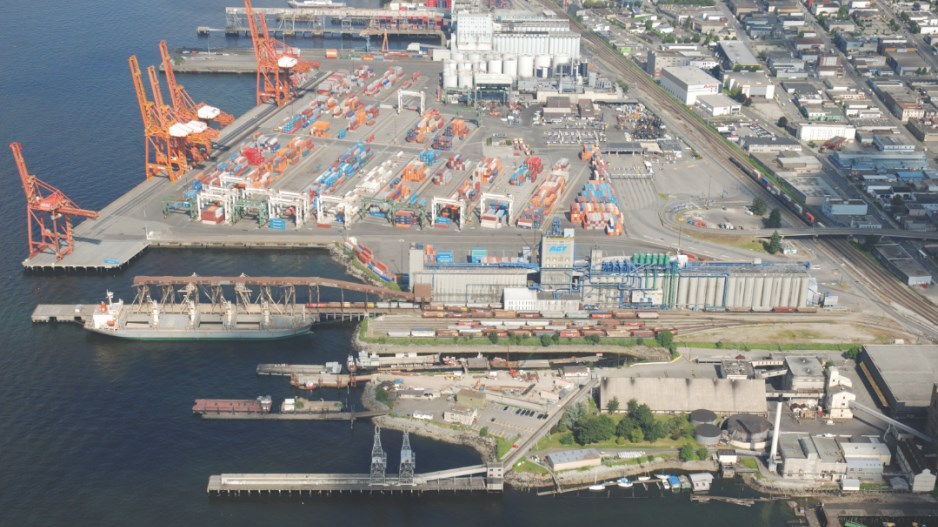Faced with dwindling expansion options, Port of Vancouver terminals are streamlining equipment and upgrading technology to increase efficiency and maintain competitiveness. But industry professionals wonder whether those initiatives will be enough to overcome infrastructure limitations.
The $600 million G3 Terminal being built at North Vancouver’s Lynnterm West Gate is among B.C.’s major new port developments. The grain elevator of the G3 Global Holdings and Western Stevedoring Co. Ltd. joint venture is hard-wired to increase the efficiency of Canadian grain exports, which have hit a host of logjams over the past few years.
According to G3, Canadian grain and oilseed crops generate $23 billion in exports each year, but infrastructure challenges are hampering the industry’s ability to meet increased global demand. The elevator is scheduled to be completed in 2020 and grain will start moving through the terminal in 2019, but there are concerns that other links in the transportation chain will undermine the elevator’s increased efficiencies.
Alliance Grain Terminal (AGT), a bulk terminal on Burrard Inlet’s south shore, recently completed a project to improve ship loader equipment to optimize load and unload times.
AGT has an annual capacity of three million tonnes. The dock conveyor system improvements and other upgrades aimed at reducing grain carrier congestion in Vancouver harbour began in 2017.
Improvements include:
•increased vessel loading capacity – up to 2,000 tonnes per hour – with the ability to accommodate larger ships, including Panamax vessels;
•safety updates; and
•a new dust suppression system to reduce waste and air pollution.
“There is no question that the efficiency in the transportation industry is becoming more and more important,” says AGT CEO David Kushnier. “The demand for exports out of Vancouver is getting higher all the time. We have now increased our ship loading capacity from an average of about 600 tonnes an hour to an average of 1,400 tonnes an hour. By doing that, it is really in line with the most efficient terminals in Vancouver. We are about 35% more efficient on unloading railcars per day because of the ship loader.”
Paterson GlobalFoods bought AGT in 2007, and the terminal is owned and operated by Paterson Grain, Parrish and Heimbecker and North West Terminal Ltd.
“All these people are facing the same … peak capacity problem,” says Garland Chow, professor at the University of British Columbia Sauder School of Business’ operations and logistics division. “That is, at a certain time, you wish you had more capacity, but at other times, you have more than enough capacity.”
Chow acknowledges that grain terminal technology has improved significantly, but new or upgraded terminals can do only so much in the long run.
The Port of Vancouver also faces a looming shortage of transportation infrastructure to handle predicted increases in containerized cargo.
“The inner harbour is full,” says Chow. “There is no place to expand. You might replace some of the grain elevators with a bigger one or a more effective one, but that is going to have a marginal impact.”
He adds that inter-terminal co-operation coupled with better technology will be key to improving Port of Vancouver cargo shipping efficiency.




